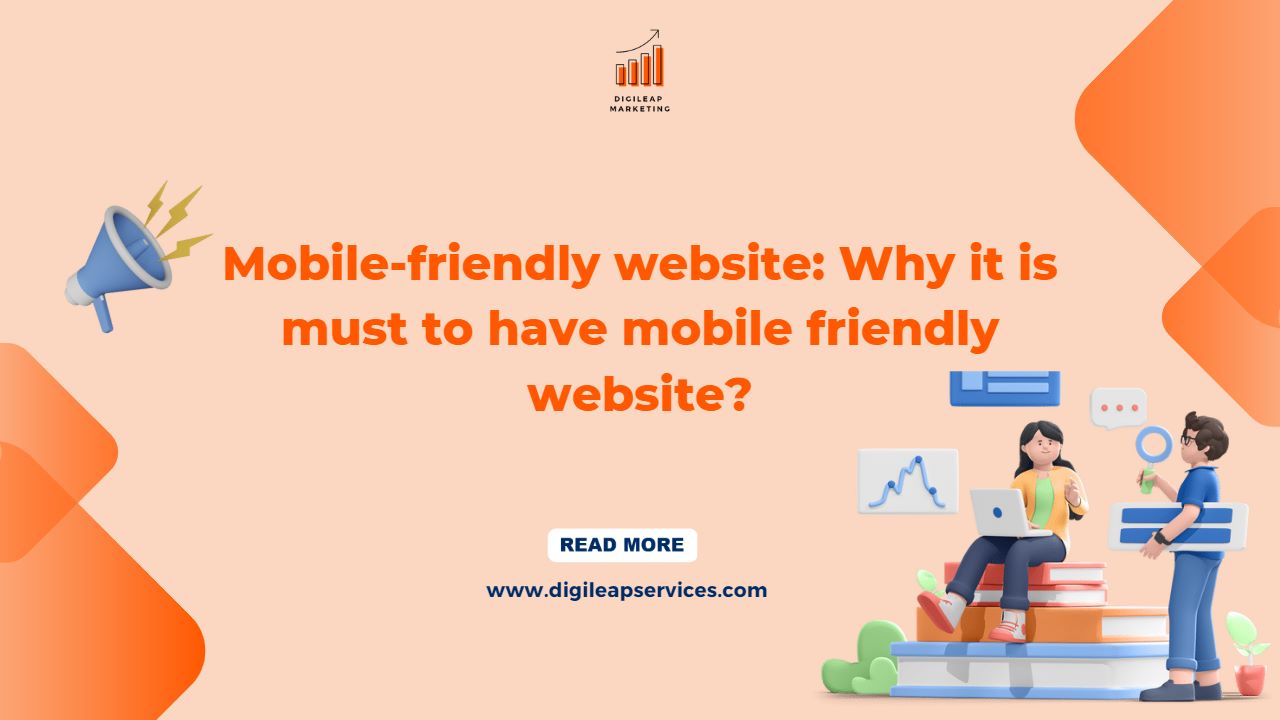Mobile-Friendly Website: Why It Is Must To Have Mobile-Friendly Website?
Mobile-Friendly Website: Most of us have known for a long time that people all around the world are increasingly accessing the internet through a variety of devices. It is no longer safe to assume that a visitor to your corporate website will be using a standard desktop or laptop computer; instead, she may be using a tablet or a portable Smartphone.
Conventional sites, including those developed only a few generations old, were not normally designed for mobile display and therefore do not show well on today’s smartphones.
While some sectors have been quick to respond by switching their corporate websites to mobile-friendly layouts, many decision-makers are still unaware that this is a serious problem that may damage the bottom line of their enterprises.
This article includes broad information and essential considerations for senior executives and marketing/communications employees regarding the necessity of mobile compatibility in a range of sectors. It also features Google’s mobile-friendly test, which will tell you right away if your site is mobile-friendly.
What does it mean to have a website that is mobile-friendly?
A mobile-friendly website is meant to look good on smaller displays, such as iPhone or Android smartphones, or intermediate-sized tablets. A mobile-optimized site adapts to the smaller screen size and arranges the information and interface in a mobile-friendly way, including:
- Larger text, easier to read
- Navigation optimized for mobile devices
- Buttons and page components that are responsive to touch
- Increased download speed
What Is the Importance of a Mobile-Friendly Website?
With an increasing number of people accessing your company website via mobile devices, it is critical to ensure that all of your visitors have a great experience, regardless of the device they use to get there. If your website takes too long to load or is difficult to use on a mobile device, they may go to a competitor. Having a mobile-friendly website has numerous significant advantages, including:
- Enhanced search visibility
- Enhanced user experience
- Lead generation has increased.
- Enhanced brand identity
How Can I Tell If Our Company’s Website Is Mobile-Friendly?
In general, you can determine whether your website is mobile-friendly if it scales to show information and navigation in a way that is optimal for usage on smaller displays. If you’re not sure, Google has a Mobile-Friendly Test that will tell you if your site fails or passes the test. Simply input your URL and Google will tell you whether your site fails or passes the test. If it passes, you’re in excellent condition; if it fails, you should consider switching your site to a mobile-friendly style as soon as possible.
What Goes Into Creating A Mobile-Friendly Website?
If your website is not presently optimized for mobile browsing, converting it will necessitate some amount of modification. Unfortunately, there is no easy switch you can flick to automatically make your site mobile-friendly. However, if your present website is well-designed, well-coded, and uses a database-driven content management system (CMS), upgrading your existing page layouts may suffice. In other circumstances, your site may need more extensive development and may need to be redesigned in some way. In any scenario, you may keep your current design scheme and content, or if you’ve been thinking about a redesign anyway, combining a design upgrade with a mobile-friendly update is a sensible way to raise your organization’s complete web presence in a single integrated effort.
The two most frequent methods for mobile websites are to create a distinct mobile site that is designed for handheld devices or to adapt your main site in such a way that it has a “responsive design” that scales to any screen size. While a distinct mobile site may make sense in some circumstances, responsive design is fast becoming the new norm. Having a single website that spans all platforms – from desktop to tablet and portable – may be more difficult to design in the beginning, but with the increased efficiency the benefits of operating a single site rather than two become clear over time.
Here are a few of the reasons why mobile-friendly websites are critical.
- Always available
Mobile-friendly websites enhance your sales and conversions because of the ease of access that surrounds this website design. mobile-friendly websites increase your sales and conversions. Knowing that a website is mobile-friendly enables visitors to interact and connect with your business across devices without being irritated or inconvenienced.
This enhanced accessibility is crucial for long-term loyalty and customer retention, thus investing in it early on is critical.
As more customers log in from different devices and phones, it is vital that your website can meet these new customer demands and that the customer experience is accessible at any moment, from any device.
- Creates Credibility and Trust
Establishing credibility and trust is critical whether you are aiming to acquire new demographics or retain existing customer groups Customers must be able to contact your brand at any time, and they must be confident that your organization is reliable, real, and trustworthy. In a world where customers are flooded with messages, offers, and commercials, how can you actually stand out?
A mobile-friendly website is one of the most efficient ways to build the trust you want with your target clients. It shows new and existing clients that you are adaptable, and flexible, and satisfy customer requests by evolving your product offerings to meet and surpass customer expectations.
It offers a feeling of authenticity and trusts to the consumer journey, making it smooth.
- A Low-Cost Way to Improve SEO
The ability to increase total income and sales is the most convincing reason to have a mobile-friendly website. In today’s highly digital industry, giving customers a faultless user experience is vital. It can have a big influence on improving overall income because it is not necessary to manage various versions of the website for different devices.
Consider the mobile user experience in comparison to the desktop user experience: what discrepancies in the customer journey may lead them to leave a mobile sale? And can they locate your site in the first place? Google’s algorithm prioritizes mobile-friendly websites, therefore having a mobile-friendly website is critical for maintaining a good SEO position.
Conclusion
Finally, a mobile-friendly website is a solid investment that may provide genuine results when implemented effectively. Whether you look at it long-term or short-term, mobile-friendly sites are the future of web design, and companies who invest in these advances early on will experience the most success in the long run.












